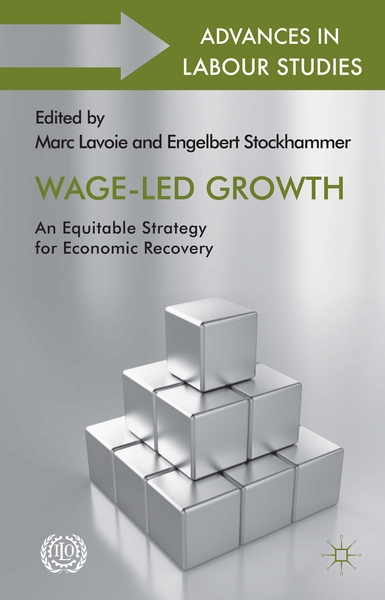An excellent discussion on wage-led economic growth is a paper by Marc Lavoie and Engelbert Stockhammer titled Wage-led Growth: Concept, Theories And Policies which appears in the recently released book Wage-Led Growth: An Equitable Strategy For Economic Recovery (Palgrave Macmillan book page)
… The advocacy of a wage-led economic strategy has a long history. It has been articulated in reformist visions within the labour movement and was discussed under the heading of ‘underconsumption’ in 19th century economics. Famous underconsumptionists in the history of economic thought include Malthus, Sismondi and Hobson.1
Underconsumptionist ideas got a boost from their endorsement by Keynes, when he proposed his theory of effective demand, arguing that excessive saving rates, relative to deficient investment rates, were at the core of depressed economies. Underconsumption theories can also be related to the problems of the realization of profit, as discussed by Marx and subsequently by various Marxist authors such as Baran and Sweezy (1966), while other authors, closely related to Kalecki (1971), such as Steindl (1952) and Bhaduri (1986), have brought together the theory of effective demand and the problem of the realization of profit. On this basis, the benefits of a wage-led growth strategy has been resurrected and formalized by several Kaleckian or post-Keynesian authors, starting with Rowthorn (1981), Taylor (1983) and Dutt (1987). Taylor (1988) showed early on that when emerging countries had enough capacity to adjust, a wage-led growth strategy made sense. More recently, the policy-oriented concept of a wage-led growth strategy was prominently used by UNCTAD (2010, 2011).
A standard objection to the consideration of the underconsumption thesis or the consideration of problems related to the lack of effective demand is that long-run growth – the trend rate of growth, also called the potential growth or the natural rate of growth – is ultimately determined by supply-side factors, such as the growth rate of the labour force and the growth rate of labour productivity. While adepts of the so-called ‘endogenous growth theory’ will recognize that investment in human capital or research and development may end up modifying the potential growth rate, they usually set aside the idea that actual growth rates could have an influence on potential growth rates. Yet, since the advent of the global financial crisis, government agencies and central banks in many industrialized countries have lowered their forecasts of long-run real growth, thus demonstrating clearly that weak aggregate demand does have an impact on potential growth. As Dray and Thirlwall (2011, p. 466) recall, ‘it makes little economic sense to think of growth as supply constrained if, within limits, demand can create its own supply’. This explains why we shall focus on the income distribution determinants of aggregate demand, paying less attention to the supply-side factors…
1See Bleaney (1976) for a historical account of underconsumptionist theories.
